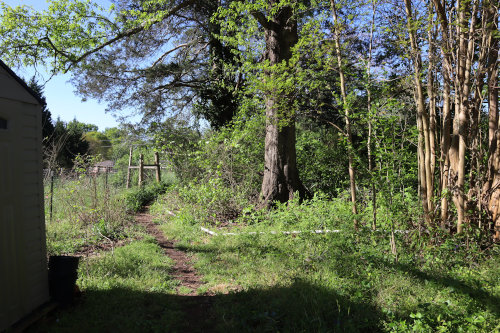This post is part of a series entitled A Year With My Camera.
Lesson 4.1 in my own words
Creativity can be learned.
- To develop creativity
- Be willing to make mistakes
- Learn to analyze the photograph without criticizing the photographer (i.e., yourself)
- Stop calling mistakes, 'mistakes' because that implies it's wrong. Each photograph is an essential step on the creative journey.
- Ultimately, we learn creativity by doing, not by reading about it.
- Things that sabotage creativity
- Focusing on things that inhibit forming new ideas
- television
- social media
- reading
- life and family issues
- Shutting down ideas before they're developed (Eg. "I can't do that.")
- Focusing on technical details rather than just experimenting
- Worrying about what other people will think
This week's project
It's nearly impossible to be creative without a goal. Setting boundaries
shapes a goal and frees us to explore that goal to its fullest.
Pick one. May use auto or manual controls, but set these ahead of time and use the same settings for the entire exercise. Finish the assignment even when you run out of ideas:
- Time restriction
- take a photo every 5 minutes for an hour
- use a timer
- spend no more than 5 seconds looking for an image
- Subject restriction
- pick one inanimate object
- take 20 completely different portraits of it
- Kit restriction
- choose the piece of your camera kit that you use the least
- Create 20 photos with it
I chose time restriction.
What I learned
The purpose of the assignment was (quoting the instructor), "If you impose some artificial limits, your brain will respond like magic. . . I'm going to give you a few artificial constraints to try this week. . . No cheating. You will run out of ideas at some point but you must keep going, keep taking photos, even though they are not going to be your best work. The process of finding images will train the neurons in your brain that this is what you want it to do when you next start looking for images, and so then next time it will be easier."
This was challenging because I do a lot of mental planning before a take a shot. I learned early on that the cutest baby picture is spoiled by cluttered, messy surroundings. That taught me to evaluate each shot and set my stage (which is one of the things listed as impeding creativity!). Plus, I find I'm applying what I've been learning in this course, which often means making manual adjustments to brightness and light before shooting.
So there was that, and neither did I want to be wandering around aimlessly, thinking about what to take pictures of. So I set my tasks as first hanging out the laundry and then heading to the garden, where there is an ongoing list of things to do. A package arrived while I was working with the laundry; live plants I'd ordered. I set them in water immediately, and when I got to the garden, started working on a place to plant the grape plant. It's not that I was planning out some sort of story; I just needed to keep my mind occupied with an easy task at hand until the timer went off.
Composition and lighting-wise, there are things I wish were different about each of the photos I took. But it's also very helpful to just be able to shoot, and not worry about details. I know I've missed good shots by fussing with details. That's a habit that would be good to break.













2 comments:
Interesting Leigh. This is a lot of the same instructions one will get for writing creatively.
Hmm. What is google up to now? It won't let me sign in to comment as me.
TB, it's interesting you should say that because writing was the example she used in the lesson. :) I guess every creative endeavor has potential creativity blocks!
Post a Comment